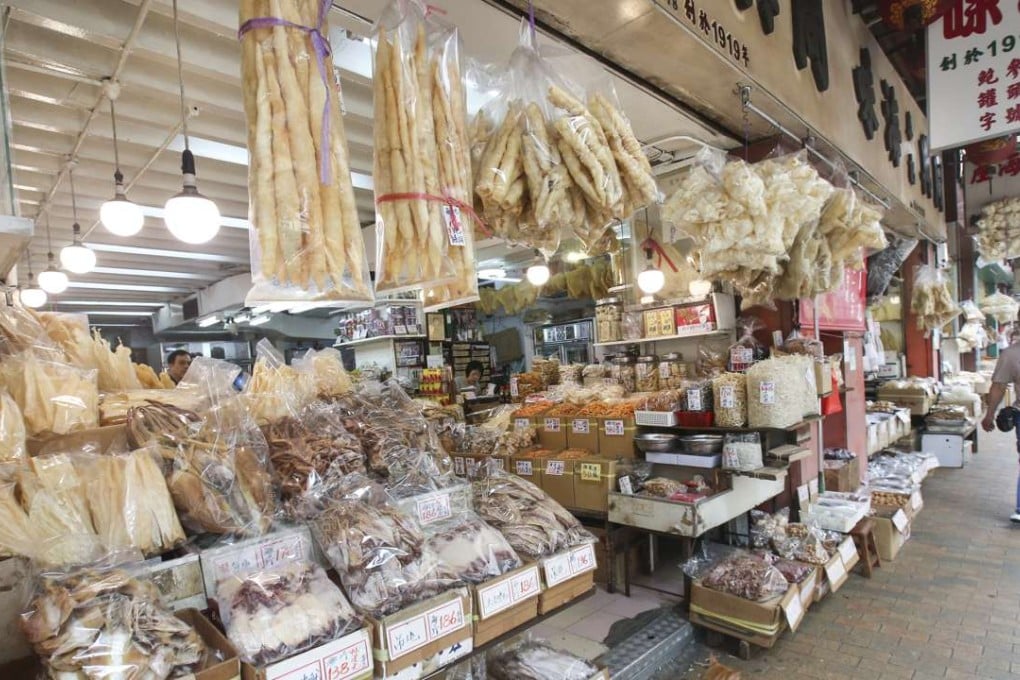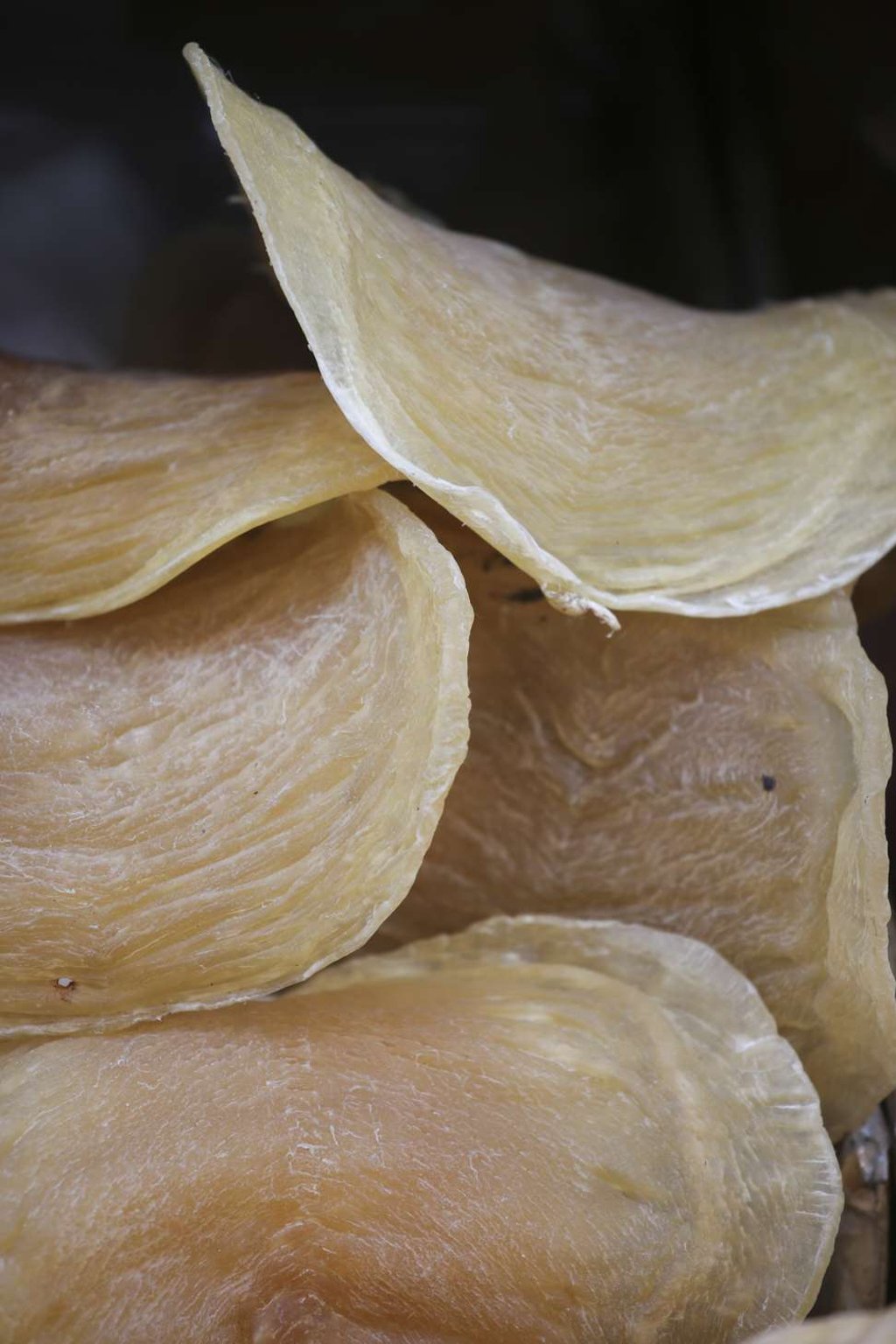Hong Kong’s Dried Seafood Street demystified: the smells, what sells, and the ways it keeps you well in Chinese tradition
Des Voeux Road West has been home to seafood vendors since the 19th century and is the place to go for dried abalone, sea cucumber and fish maw, as well as cordyceps fungus and other dried mushrooms

The most extravagant goods you can find in Hong Kong may not be in its upscale shopping malls, but on an old street where a sharp, salty smell pervades the air. Here, customers pay HK$1,000 for a kilogram of black fungus that looks like human hair, while a few yellow discs resembling plastic cost as much as HK$20,000.

The shops also spill over onto neighbouring Wing Lok Street and Bonham Strand West in Sheung Wan.
From 8am to 5pm, locals come to bargain with vendors they have known since childhood; stiff paper boxes full of dried seafood are carried onto minivans; and curious tourists take photos of the strange fish, molluscs and other sea life, alongside sacks full of herbs, and snakes displayed in glass jars.
The hub of commerce in the northwest corner of Hong Kong Island started to emerge soon after the city was formally declared a British colony at nearby Possession Street in the mid-19th century. Chinese businessmen established a number of nam pak hong, or south-north trading houses, to conduct trade with the mainland and Southeastern Asian countries.